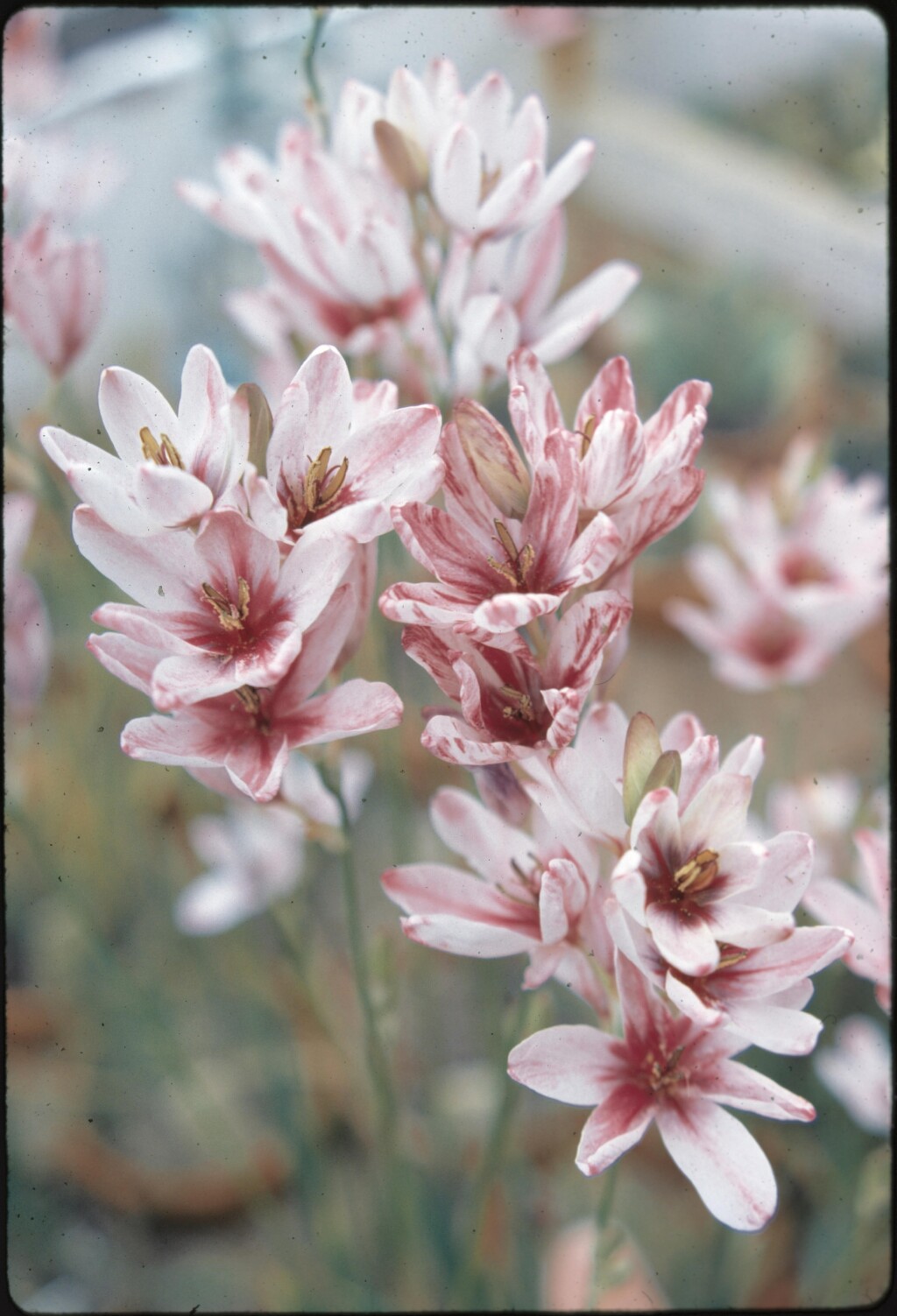Ixia
Small perennial herb, leaves and flowers annual; corm globose to ovoid, with outer layers fibrous. Leaves few, mainly basal, linear to ensiform, flat. Inflorescence with scape erect, slender, wiry, sometimes branched, with flowers distichous or spirally arranged; primary bracts oblong to obovate, sub-equal. Flowers actinomorphic, erect; perianth tube exserted beyond the primary bracts, straight, narrowly cylindric, ± widened distally, lobes equal, spreading, oblong to obovate; stamens symmetrically arranged around the style, anthers basifixed, free or united to some extent; style distally with 3 spreading branches, each branch linear, short and entire. Capsule globose to obloid, thin-walled; seeds numerous.
About 80 species, in southern Africa. Many species and their hybrids are cultivated, with at least 8 species naturalised in Australia, 5 in Victoria.
Two other species have been reported from Victoria: Ixia erecta Berg (Ewart 1908) which Cooke (1986) suggests that was probably cultivated material, and Ixia lutea Baker (Ewart 1919) which cannot be assigned to a taxon accepted in this treatment. Species other than those outlined in this treatment undoubtedly occur in horticultre.
Due to a long history of cultivation, many hybrids (both manipulated and 'accidental') are known, at least some of which are fertile and are probably represented in naturalised populations. Identification of species involved in contributing to such populations may be impossible using conventional methods and the key here may or may not be useful in suggesting likely parent species.
Conn, B.J. (1994). Iridaceae. In: Walsh, N.G.; Entwisle, T.J., Flora of Victoria Vol. 2, Ferns and Allied Plants, Conifers and Monocotyledons, pp. 686–716. Inkata Press, Melbourne.
 Spinning
Spinning



